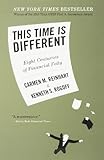https://www.amazon.co.uk/This-Time-Different-Centuries-Finan...
This time period was also known as the “Southeast Asian Financial Crisis”. To this day there are still empty 60 story skyscrapers in Bangkok because of how bad it was.
A big lesson from that event are that foreign currency reserves are never enough.
Korea had something like $300 billion in foreign currency reserves and was wiped out in days. $3 trillion is a lot, but adjusted for China’s population, and the fact that they will need to use those reserves to last 1 year maybe 2, and they start to look much smaller.
Also this kind of a crisis would not be like a tech bubble. Tech Bubbles are bad, but they do not invoke the banking system. If the banking system falls, the general rule of thumb is a minimum 10 year recovery.
It’s worth noting that this is the position adopted by George Friedman in his book “The Next 100 Years” where he predicts the fall of China and also North Korea by 2030 at the very latest.
Also check out “This Time Is Different: Eight Centuries of Financial Folly” by Carmen Reinhart from Princeton University Press.
The Chastening: Inside The Crisis That Rocked The Global Financial System And Humbled The Imf https://www.amazon.com/dp/1586481819
The Next 100 Years: A Forecast for the 21st Century https://www.amazon.com/dp/0767923057
This Time Is Different: Eight Centuries of Financial Folly https://www.amazon.com/dp/0691152640
----------------------------------------
[0] http://www.amazon.com/This-Time-Different-Centuries-Financia... This Time Is Different: Eight Centuries of Financial Folly It basically takes centuries of data and shows how world leaders tend to make the same mistakes, causing crises, and then follow the wrong solutions to said crises.
In all seriousness, if you really believe this, I suggest you pick up a copy of that book. History doesn't repeat itself, but it does rhyme, and you'd be surprised just how similar this time is.
[1] http://www.amazon.com/This-Time-Different-Centuries-Financia...
I don't know about the particular stat the article is talking about, but they give plenty of data here.
"Throughout history, rich and poor countries alike have been lending, borrowing, crashing--and recovering--their way through an extraordinary range of financial crises. Each time, the experts have chimed, "this time is different"--claiming that the old rules of valuation no longer apply and that the new situation bears little similarity to past disasters."
http://www.amazon.com/This-Time-Different-Centuries-Financia...
In paperback, get yours today.
I'm not sure this is true, either. Financial crises are surprisingly similar [0].
[0]http://www.amazon.com/This-Time-Different-Centuries-Financia...
>"These are founded upon a large body of knowledge of causation and empirics in medicine, chemistry, and biology"
And what about new discoveries? What do they do then?
Some things are easy. Some things are new, you have little data, and have to make a best guess. Same as economics.
http://www.amazon.com/This-Time-Different-Centuries-Financia...
Barons: "A tour de force of quantitative analysis covering financial crises affecting 66 countries over the past 800 years, the book identifies pre-crisis patterns that recur with eerie consistency."


A good starter book: "This Time It's Different", often referred to as "Rheinhart and Rogoff" by the authors names. https://www.amazon.com/This-Time-Different-Centuries-Financi... - great overview of how many nation-state debt crises got resolved. In general, most parties end up taking a haircut (not a total loss) and everyone gets on with their life.
Sears and Radio Shack are interesting cases from the corporate (not government) world. There are entire specialist law firms and financing companies that deal just with distressed debt.
What's crazy to me is how much this stuff repeats. Argentina has been a basket case almost nonstop for the last 20 years and yet, people still lend to them. Why anyone would continue to do this over and over befuddles, but just goes to show how crazy things can be.